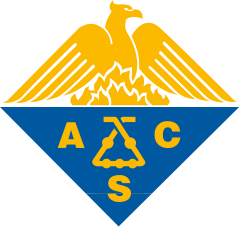Polymer, volume 205, pages 122667
Aliphatic polycarbonates derived from epoxides and CO2: A comparative study of poly(cyclohexene carbonate) and poly(limonene carbonate)
Publication type: Journal Article
Publication date: 2020-09-01
Materials Chemistry
Organic Chemistry
Polymers and Plastics
Abstract
The ring-opening copolymerization (ROCOP) of epoxides and CO2 provides an alternative approach towards polycarbonates and due to their aliphatic nature, they represent an interesting alternative to bisphenol-A based polycarbonates. A Lewis acidic β-diiminate (BDI)CF3-Zn-(SiMe3)2 complex 1 is used in the ROCOP of CO2 with cyclohexene oxide (CHO) and limonene oxide (LO), respectively. The knowledge gained from polymerizations monitored via in situ IR spectroscopy was used to upscale the reactions to a 1 L reactor. The two products poly(cyclohexene carbonate) (PCHC) and poly(limonene carbonate) (PLC) were then characterized via thermal analysis, a multiaxial pressure test, and dynamic mechanical analysis and compared with commercial polymers. While PCHC and PLC were both thermally stable at 150 °C for 20 min and only minor decomposition occurred at 180 °C, PLC is prone to cross-linking at elevated temperatures. This could be prevented by hydrogenation of the double bond or by the addition of an antioxidant. In the mechanical performance, the aliphatic polymers ranged between the highly impact resistant Durabio® and the brittle PMMA but broke without a splintering of the material. Overall, this study enabled a classification of CO2-based polycarbonates, especially of the novel PLC. Additionally, complex 1 was active in the terpolymerization of CHO, LO, and CO2. The formation of an actual terpolymer was confirmed via aliquot gel-permeation chromatography and diffusion-ordered NMR spectroscopy. High-pressure NMR techniques reveal an interesting kinetic feature. CHO gets copolymerized with CO2 exclusively, and LO incorporation only starts when CHO is fully consumed.
Top-30
Journals
|
1
2
3
|
|
|
Macromolecules
3 publications, 13.64%
|
|
|
Polymer Chemistry
3 publications, 13.64%
|
|
|
Russian Chemical Reviews
2 publications, 9.09%
|
|
|
Journal of Catalysis
1 publication, 4.55%
|
|
|
Chinese Journal of Polymer Science (English Edition)
1 publication, 4.55%
|
|
|
Macromolecular Chemistry and Physics
1 publication, 4.55%
|
|
|
Journal of Polymer Science
1 publication, 4.55%
|
|
|
ChemPlusChem
1 publication, 4.55%
|
|
|
Advances in Organometallic Chemistry
1 publication, 4.55%
|
|
|
Advances in Polymer Science
1 publication, 4.55%
|
|
|
Industrial & Engineering Chemistry Research
1 publication, 4.55%
|
|
|
RSC Sustainability
1 publication, 4.55%
|
|
|
Journal of the American Chemical Society
1 publication, 4.55%
|
|
|
Microporous and Mesoporous Materials
1 publication, 4.55%
|
|
|
Inorganic Chemistry
1 publication, 4.55%
|
|
|
Journal of Polymers and the Environment
1 publication, 4.55%
|
|
|
Chemical Reviews
1 publication, 4.55%
|
|
|
1
2
3
|
Publishers
|
1
2
3
4
5
6
7
|
|
|
American Chemical Society (ACS)
7 publications, 31.82%
|
|
|
Royal Society of Chemistry (RSC)
4 publications, 18.18%
|
|
|
Elsevier
3 publications, 13.64%
|
|
|
Springer Nature
3 publications, 13.64%
|
|
|
Wiley
3 publications, 13.64%
|
|
|
Autonomous Non-profit Organization Editorial Board of the journal Uspekhi Khimii
2 publications, 9.09%
|
|
|
1
2
3
4
5
6
7
|
- We do not take into account publications without a DOI.
- Statistics recalculated only for publications connected to researchers, organizations and labs registered on the platform.
- Statistics recalculated weekly.
Are you a researcher?
Create a profile to get free access to personal recommendations for colleagues and new articles.
Metrics
Cite this
GOST |
RIS |
BibTex
Cite this
GOST
Copy
Kernbichl S., Rieger B. Aliphatic polycarbonates derived from epoxides and CO2: A comparative study of poly(cyclohexene carbonate) and poly(limonene carbonate) // Polymer. 2020. Vol. 205. p. 122667.
GOST all authors (up to 50)
Copy
Kernbichl S., Rieger B. Aliphatic polycarbonates derived from epoxides and CO2: A comparative study of poly(cyclohexene carbonate) and poly(limonene carbonate) // Polymer. 2020. Vol. 205. p. 122667.
Cite this
RIS
Copy
TY - JOUR
DO - 10.1016/j.polymer.2020.122667
UR - https://doi.org/10.1016/j.polymer.2020.122667
TI - Aliphatic polycarbonates derived from epoxides and CO2: A comparative study of poly(cyclohexene carbonate) and poly(limonene carbonate)
T2 - Polymer
AU - Kernbichl, Sebastian
AU - Rieger, Bernhard
PY - 2020
DA - 2020/09/01
PB - Elsevier
SP - 122667
VL - 205
SN - 0032-3861
ER -
Cite this
BibTex
Copy
@article{2020_Kernbichl,
author = {Sebastian Kernbichl and Bernhard Rieger},
title = {Aliphatic polycarbonates derived from epoxides and CO2: A comparative study of poly(cyclohexene carbonate) and poly(limonene carbonate)},
journal = {Polymer},
year = {2020},
volume = {205},
publisher = {Elsevier},
month = {sep},
url = {https://doi.org/10.1016/j.polymer.2020.122667},
pages = {122667},
doi = {10.1016/j.polymer.2020.122667}
}






